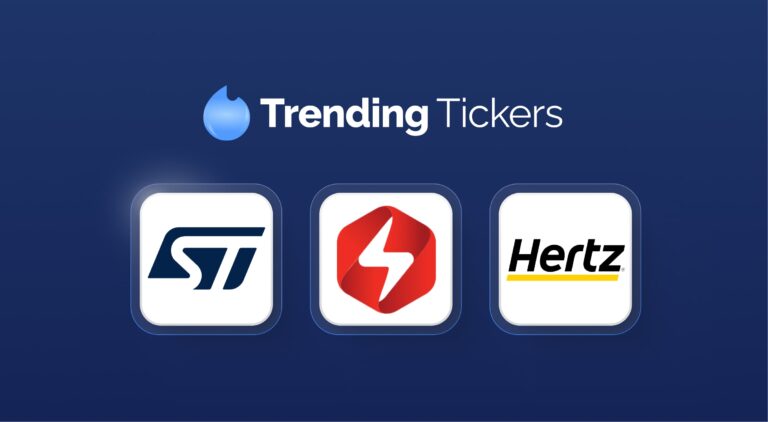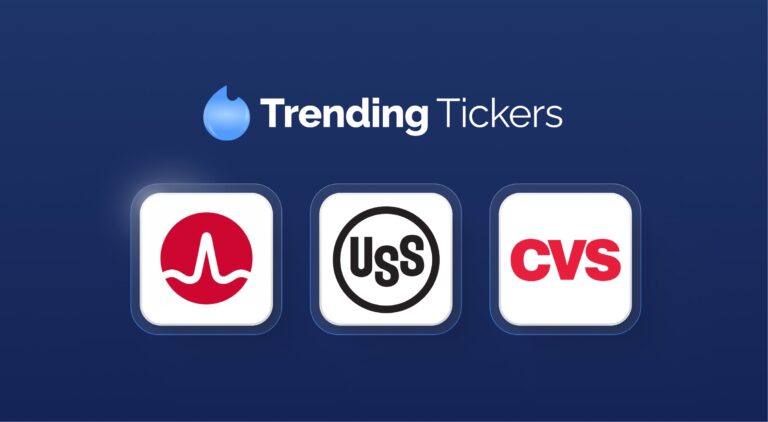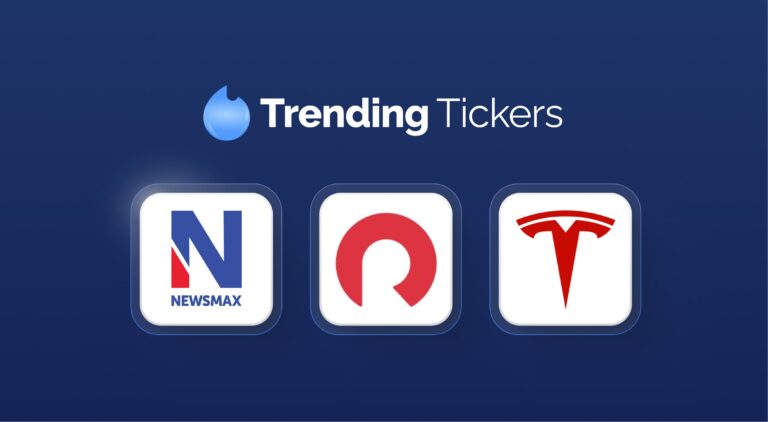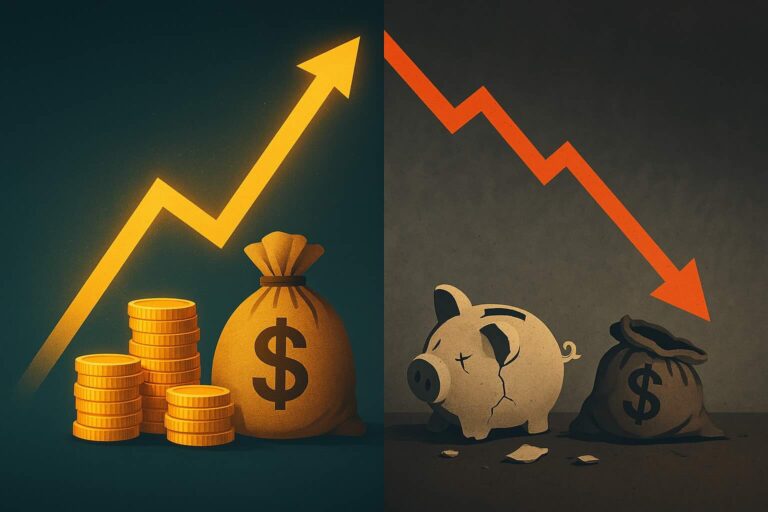Options Finally Explained Simply
Options are considered a frontier in investing – more complicated than stocks, and both a bit exciting and a bit risky at the same time.
In fact, decades ago when I was a young hedge fund analyst looking to prove my bravado, I jumped into options modeling to do that.
But I realized something as I began to read an options book: it – much like many options websites these days – was strong on the “what” but weak on the “why.”
For my brain, and possibly for yours, it’s easier to understand the whats if they’re presented alongside the whys – why real people would want to use options to make certain trades.
So let’s cover some requisite whats along with plenty of whys as we walk through some options basics.
Two types of exchange-traded options
Call options give you the right (but not the requirement) to buy a stock at a certain “strike” price up to a certain date.
Put options give you the right (but not the requirement) to force someone else to buy a stock from you at a strike price up to a certain date.
| European options, which are seldom used now, only allow a transaction on the expiration date of the option. American options can be exercised at any time before and including the expiration date. |
Every option trade has a buyer and a seller
An option buyer – whether call or put – is buying the right (the fee paid is called a premium) to exercise that option.
An option seller (or writer) is receiving the premium in exchange for standing ready to deliver on the deal – to either provide the stock for the call buyer to buy, or to buy the stock the put buyer has the right to sell.
In a simple sense, the options buyer is betting on (or protecting against) stock “fireworks” – a big change in a stock’s price. The options seller is usually betting on the status quo – he or she is happy to receive the premium and patiently wait for nothing major to happen, leading the options to expire unexercised. In this way, the seller has something in common with an insurance company.
Many options traders hold the opinion that it’s generally better to be a seller/writer rather than a buyer of options, because in their view, the market tends to overestimate the chance of wide swings happening (and because the higher the expected volatility of the stock, the higher the option price).
Why use options?
- Speculation: With a stock itself – buying or shorting – you can only make a simple directional bet: up or down. This is plenty for most people. But what if you have a more nuanced view on a stock’s price movement? A view like:
- “Dead money” – the stock will be flat for a long time
- Wildly volatile – the stock will either go way up or way down, but you’re not sure which one
- Range-bound – the stock might move a little, but not a lot; a slightly more animated version of dead money‘
You can’t exploit these nuanced beliefs just by buying or short-selling stocks. You need options (in fact, you need combinations of options for these trades, which we’ll discuss in a different piece).
More simply, if you’re of strong conviction about a stock’s movement, and you’re willing to take a substantial amount of risk, stock options let you magnify your potential upside in a leveraged-like way, allowing more gain potential per investment size than just buying a stock.
You can also lose a lot of money in speculative options trading, too. The knife cuts both ways.
- Hedging: You don’t always need to take risk with options. Options can significantly enhance the safety profile of an investment by limiting losses. Buying “protective puts” is easily the best-known options strategy, but a short-seller might buy a call for the same reason.
Why would someone buy a call option?
Mostly, calls allow investors to make leveraged bets on a stock’s price rising.
Pretend a stock is at $100 and an investor expects it to rise to $120 in, say, the next several months. An investor buying the stock could make a 20% gain.
In real life a 20% gain in a few months would be a win for most investors. But if an investor had both a particularly high conviction about that gain occurring, and a willingness to make a risky wager accordingly, he or she might (and I’m just tossing out hypothetical numbers for example here; actual option pricing will vary by stock and by day) pay something like $7 or $8 or $10 for an option that stands to go up 5x in value should the stock price rise by 20%.
That’s the good case.
However, if the stock just treads water at $100 or even dips down to, say, $95, the investor who owns the stock still has all or nearly all of his or her money, whereas the call buyer has lost everything.
Short sellers have a polar opposite reason to buy a call, as mentioned above: downside protection. If you’ve borrowed (and quickly resold, to short) stock to bet on a decline, a sudden spike upwards represents a risk, and buying the right to buy that stock at a set price – even if the stock’s market price soars past it – limits a short seller’s downside.
Why would someone sell a call or put option?
Most simply, to pocket the cash. And because implied or expected volatility is a main swing factor in options prices, options sellers would be particularly eager to sell options on stocks for which the market (and the buyer) is expecting a lot of volatility on – this makes the options expensive – but for which the seller believes will behave in a tamer manner than the market expects.
Sellers might also be making a directional bet. Whereas a buyer of Tesla calls likely expects the company to do better than the market expects, an investor with a neutral-to-bearish conviction about Tesla might be happy to write some calls to take the other side of a trade.
It’s been said that options trades are zero-sum games. That’s true in aggregate, and likewise in the sense of a trade itself, which will have a winner and a loser, but it’s also fair to say that single options transactions may be part of more sophisticated trades investors put on, and success of the overall trade is defined by more than one options leg.
| Options buyers tend to be betting on theatrics, and options sellers tend to be betting on a lack of theatrics. |
Naked and covered options
When you’re buying options, your downside is clear: you lose the premium if the option expires worthless.
That’s exactly the scenario option sellers want. But what if you buy a call and you end up winning big? In theory, the option seller has to deliver the underlying shares at the strike price to you. (I say “in theory” because full exercise only happens in a minority of trades; it’s possible to just close out an options trade (with each side accepting respective profits or losses) without exercise, which many people do to keep things simple.)
Imagine XYZ stock was at $100 when you bought a call from me for a few bucks per share – meaning a few hundred dollars per contract, as options are sold in contracts of 100 – for the rights to buy XYZ at a $115 strike price.
Some time passes, and XYZ has risen to $140. You’re delighted. You get to buy XYZ from me at $115 and turn around and sell it at $140 (or close out your option trade with equivalent profit).
I am not delighted. If I at least owned XYZ beforehand – meaning I sold a covered call – my downside is limited to regretting that I’m selling you a stock for $115 that, had I not sold you the option on, I could have sold for $140.
If I had not owned XYZ beforehand – meaning I sold a naked call – I’d have to run out and buy it on the open market at $140 so I can deliver it to you at $115. Although I’m still losing $25 (minus the premium you paid me) in this example, with a naked call I’m out whatever cash the stock price rises to. What if it rises to $240? To $300?
Options explainers commonly say naked option writers have “theoretically infinite losses” for this reason. That’s arguably a stretch – there is no chance of any stock going to infinity – but it’s certainly fair to say that if you’re writing naked calls on a stock that soars, you will have big losses and you will also have to come up with the capital to buy that underlying stock to deliver to the (presumably ecstatic) options buyer.
Selling naked options entails big risk, so for safety of broker and options writers alike, brokers responsibly restrict naked option privileges to investors who have proven experience with trading options. In fact, options trading privileges are granted in stages or levels, typically with covered calls at the beginner level, naked calls at the most advanced, and trades with names like straddles and strangles and spreads in the middle.
How are options valued?
As with stocks, investors use multiple methods to value options. Nobody can agree on a single “best” way, and that’s probably good, because it opens the possibility for enterprising investors to profit.
The main thing that gives an option value is the probability that the option ends up profitable (in the money, or ITM) at or before expiry. Mathematical models developed by researchers like Ed Thorpe, Myron Scholes and Fischer Black (who developed the popular Black-Scholes formula) use several inputs.
The stock price and strike price obviously factor in: if XYZ stock is $100, the right to buy it at $101 will cost more than the right to buy it at $10,000 (and no real-life option contract would even exist for this price) because the chance of that price being reached during any reasonable option term is negligible.
The option’s duration is another factor: the longer the option term, the more chance of the option ending up profitable, so the more expensive the option. Likewise, option prices experience time decay (i.e., they go down) as they march toward expiration. Option terms are commonly some number of months, but multi-year options exist, too.
The risk-free rate of return (think: the US Treasury rate, which provides a sort of bare minimum opportunity cost) is a baseline in equity valuation, as well as in most options pricing.
The future volatility of the stock, which is obviously unknowable and thus proxied by a measure called implied volatility.
Some modelers include dividends paid.
You can see that all these inputs are easy-to-get quantities except for volatility, which is an estimate. It’s not surprising that options traders spend a lot of time thinking about volatility – and betting on it.
The Black-Scholes equation has many imperfections, like assuming European options, assuming a normal distribution of stock price possibilities, assuming no transaction costs or taxes, and a “no arbitrage” assumption (this part is not a flaw) that presumes the riskless portion of an option will earn money at the risk-free rate, which in turn is assumed to be constant across maturities.
The Black-Scholes model is still deemed “good enough” to be the workhorse of options valuation, but other models have sprung up like binomial and trinomial pricing. And investors use Monte Carlo analysis for options, too.
BBAE gives you an options pricing tool
As a perk, BBAE offers a theoretical options pricing tool to our customers from dxFeed that employs multiple models (including several variations of Black-Scholes, along with four others) in addition to their own version of an arbitrage-free price-fitting algorithm to impute an estimate of each option’s theoretical fair value.
Again, these are estimates to be compared against market prices (as with stocks, investors seek to buy undervalued options and sell overvalued ones), but investors find dxFeed’s suggestions helpful and a benefit of dxFeed’s theoretical pricing tool in particular is that it’s robust enough to price thinly traded options, for which the last recorded trade may be old and thus not representative of a currently realizable price.
What are option greeks? (hint: sensitivities)
Options can have the appearance of being mathy, but if you’re not mathy yourself, fear not: you really don’t need to be able to compute much yourself, especially these days. It’s far more important to understand the principles and factors at play with options. And they may be simpler than you think.
“Greeks” – named for their greek letters – mostly measure how sensitive option prices are to certain inputs. You’ll see them discussed, so here’s what they mean.
Delta is how sensitive an option price is to changes in the underlying stock price.
Gamma is how fast delta changes – or from another perspective, how stable the delta relationship is. A high gamma means the option price is less stable.
Theta measures the sensitivity of an option’s price to time decay – how quickly an option loses value as the expiration date approaches.
Vega measures the sensitivity of an option’s price to changes in expected future volatility.
Rho measures the sensitivity of an option’s price to changes in interest rates.
Lambda measures sensitivity of an option’s investment leverage to changes in price of the option – i.e., as price changes, how does the leverage offered change?
Believe it or not, there are several more greeks called “lesser” greeks (zomma, for instance, is a third-order derivative measuring how sensitive gamma is to changes in implied volatility), but if you’re close to using them you don’t need this article.
In my own view, investors don’t need a working understanding of any greeks to get started with options. But it’s good to know they exist, as they do represent part of the “why” and “how” options prices move around.
Options trading: What really matters
Far more important is to understand the basic principles and mechanics of options trading – along with a focus on risk mitigation – and to have a fundamental belief about the underlying stock. Options are bets on how securities will move, and investors should ensure they have a view on that before deciding how to capitalize on that view with an options trade. Don’t let the tail wag the dog, in other words.
This article is for informational purposes only and is neither investment advice nor a solicitation to buy or sell securities. Options carry a high level of risk and are not suitable for all investors. Certain requirements must be met to trade options through BBAE. Please read the options disclosure document titled “Characteristics and Risks of Standardized Options.” Supporting documentation for any claims or statistical information is available upon request. Investing involves risks, including loss of principal. Hedging and protective strategies generally involve additional costs and do not assure a profit or guarantee against loss. Neither the author nor BBAE has a position in any investment mentioned.













